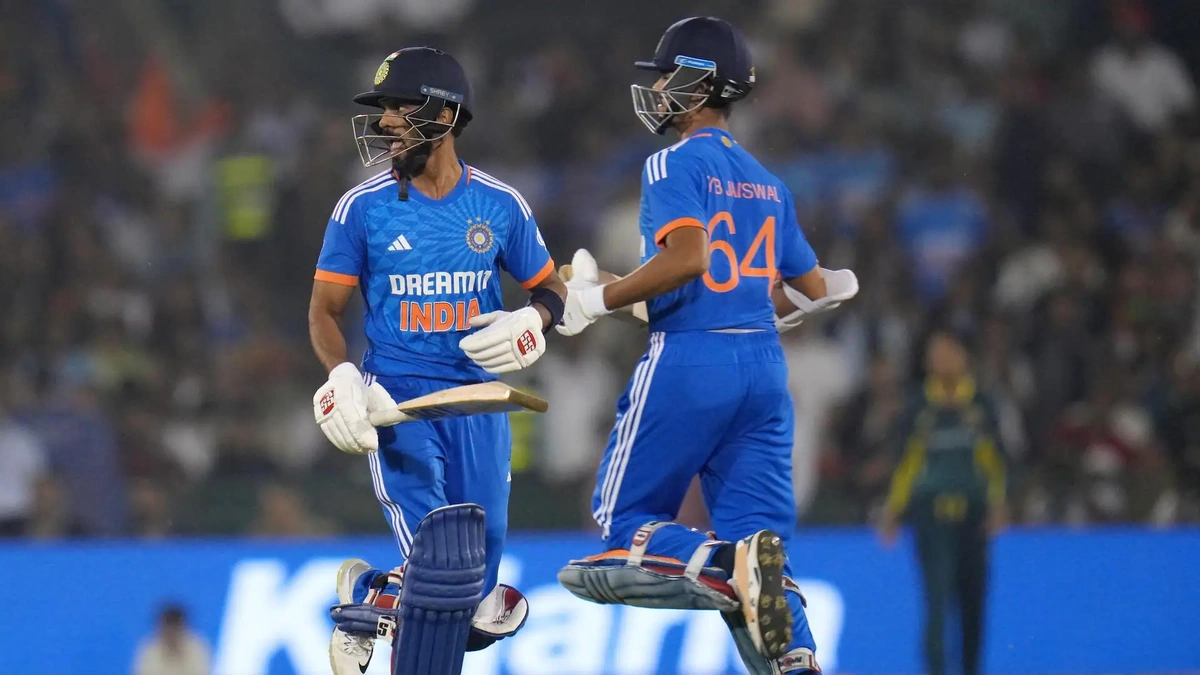The world of T20 batting is constantly evolving. Remember those days when a score of 160 was considered a match-winning total? Now, teams chase down 200+ totals with alarming regularity. This isn’t just about bigger bats or shorter boundaries – it’s a fundamental shift in strategy, and two of the biggest drivers of this revolution are India and Australia. What fascinates me is how differently they’re approaching it, and what the rest of the cricketing world can learn. So, let’s dive in.
The Aussie Approach | Power and Aggression Redefined

Australia has always been known for its aggressive brand of cricket. But their current T20 batting philosophy takes it to a whole new level. It’s not just about hitting sixes; it’s about maximizing every single ball. Think of players like David Warner, Glenn Maxwell, and Marcus Stoinis. These guys aren’t just looking to clear the ropes; they’re calculating risks, finding gaps in the field, and putting immense pressure on the bowlers from ball one. Their focus is on maintaining a high strike rate throughout the innings. But, what underpins this sustained aggression?
Their success lies in a few key areas:
- Strong top order: Warner and Finch (though Finch has retired) have consistently provided explosive starts, setting the stage for the middle order to continue the onslaught.
- Versatile middle order: Players like Maxwell and Stoinis can adapt to different situations, accelerating when needed and consolidating when wickets fall.
- Fearless approach: They aren’t afraid to take risks, even if it means losing a few wickets along the way. They believe that the reward of a high score outweighs the risk of getting out.
And it’s not just about individual brilliance; it’s about a collective mindset. The Australian team management encourages players to play with freedom and express themselves on the field. What’s so great about that is it really allows the players to thrive.
India’s Calculated Risk | A Blend of Tradition and Innovation
India’s T20 batting approach, on the other hand, is a bit more nuanced. While they certainly have their share of power-hitters, they also value technique, timing, and game awareness. Think of Virat Kohli, Rohit Sharma, and Suryakumar Yadav. These players are masters of finding the gaps, rotating the strike, and building partnerships. Their focus is on controlling the game and ensuring that they have wickets in hand towards the end , allowing them to launch an assault in the final overs. It’s about building a steady platform before exploding.
Let me rephrase that for clarity. It’s about knowing when to attack and when to defend, a trait deeply ingrained in the Indian cricketing psyche.
Their success lies in:
- Strong emphasis on technique: Indian batsmen are known for their classical technique and ability to play spin bowling, which allows them to score runs consistently.
- Strategic risk-taking: They don’t blindly swing at every ball; they pick their moments and target specific bowlers, using their knowledge of the game to their advantage.
- Adaptability: Indian batsmen are adept at adapting to different conditions and situations, whether it’s chasing a big total or defending a small one.
The Underlying Stats and Metrics of Modern T20
Modern T20 batting is underpinned by a mountain of data. Teams now analyze every aspect of the game, from batsmen’s strike rates against different types of bowlers to the effectiveness of various field placements. This data is then used to make informed decisions about team selection, batting order, and match strategy. For example, a team might choose to open with a pinch-hitter against a particular bowler or to target a specific area of the field based on the opposition’s weaknesses. Here’s the thing: this level of analysis has revolutionized the game, making it more strategic and unpredictable.
Key metrics include:
- Strike Rate: Measures how quickly a batsman scores runs.
- Average: Indicates a batsman’s consistency.
- Boundary Percentage: Shows the percentage of balls a batsman hits for four or six.
- Dot Ball Percentage: Reveals how often a batsman fails to score.
The Impact on Global Cricket | A Template for Success
The contrasting approaches of India and Australia offer valuable lessons for other cricketing nations. Teams need to find a balance between power-hitting and strategic batting, adapting their approach to suit their strengths and weaknesses. For example, smaller nations with limited resources might focus on developing a core group of power-hitters who can maximize their scoring opportunities. On the other hand, teams with a strong batting lineup might prioritize building partnerships and rotating the strike. What’s important is to have the right player with the right strategy .
The key takeaways are:
- Adaptability is crucial: Teams need to be able to adapt their approach to different conditions and situations.
- Data-driven decision-making is essential: Teams need to use data to make informed decisions about team selection and match strategy.
- A balanced approach is key: Teams need to find a balance between power-hitting and strategic batting.
Future Trends | What’s Next for T20 Batting?
The T20 batting revolution is far from over. Expect to see even more innovation in the years to come, with batsmen developing new shots and strategies to stay ahead of the game. Some potential trends include:
- The rise of the switch-hit: Batsmen will increasingly use the switch-hit to disrupt bowlers’ rhythm and exploit gaps in the field.
- Increased use of pre-meditation: Batsmen will pre-meditate their shots more often, anticipating bowlers’ deliveries and setting themselves up for success.
- Greater emphasis on fitness: Batsmen will need to be fitter and stronger than ever before to keep up with the demands of the modern game.
FAQ Section
What if I’m struggling to improve my strike rate?
Focus on hitting through the line and targeting specific areas of the field. Practice power-hitting drills and work on your timing.
How important is fitness in T20 batting?
Extremely important. You need to be able to run quickly between the wickets, hit the ball a long way, and maintain your energy levels throughout the innings.
What’s the best way to handle pressure situations?
Stay calm, focus on the present moment, and trust your instincts. Practice visualization techniques to prepare yourself mentally for high-pressure situations.
Is it really all just about hitting sixes?
Absolutely not. It’s about smart, strategic hitting, rotating the strike, and building partnerships. Sixes are great, but consistency and adaptability are just as important.
So, the T20 revolution continues, driven by the contrasting yet equally compelling approaches of India and Australia. It’s a testament to the ever-evolving nature of cricket and the relentless pursuit of excellence. And that, my friends, is what makes this game so damn fascinating.

I’m Vishal Ojha, a passionate blogger, content writer, and web designer with over four years of experience. I have a deep love for sports, especially cricket, and enjoy sharing the latest updates, insights, and analyses from the world of athletics. Every article I publish is carefully researched and fact-checked, ensuring readers get accurate and engaging sports content they can trust.



